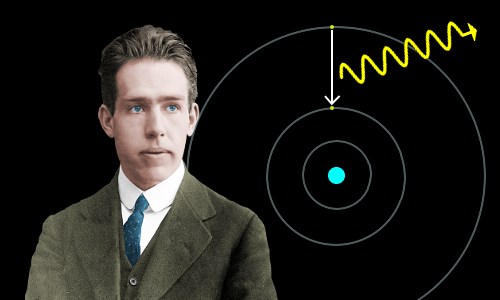The universe is at least 986 billion years older than physicists thought and is probably much older still, according to a radical new theory.
The revolutionary study suggests that time did not begin with the big bang 14 billion years ago. This mammoth explosion which created all the matter we see around us, was just the most recent of many.
The standard big bang theory says the universe began with a massive explosion, but the new theory suggests it is a cyclic event that consists of repeating big bangs.
"People have inferred that time began then, but there really wasn't any reason for that inference," said Neil Turok, a theoretical physicist at the University of Cambridge, "What we are proposing is very radical. It's saying there was time before the big bang."
Under his theory, published today in the journal Science with Paul Steinhardt at Princeton University in New Jersey, the universe must be at least a trillion years old with many big bangs happening before our own. With each bang, the theory predicts that matter keeps on expanding and dissipating into infinite space before another horrendous blast of radiation and matter replenishes it. "I think it is much more likely to be far older than a trillion years though," said Prof Turok. "There doesn't have to be a beginning of time. According to our theory, the universe may be infinitely old and infinitely large."
Today most cosmologists believe the universe will carry on expanding until all the stars burn out, leaving nothing but their cold dead remains. But there is an inherent problem with this picture. The Cosmological Constant - a mysterious force first postulated by Albert Einstein that appears to be driving the galaxies apart - is much too small to fit the theory. Einstein later renounced it as his "biggest blunder".
The Cosmological Constant is a mathematical representation of the energy of empty space, also known as "dark energy", which exerts a kind of anti-gravity force pushing galaxies apart at an accelerating rate.
It happens to be a googol (1 followed by 100 zeroes) times smaller than would be expected if the universe was created in a single Big Bang. But its value could be explained if the universe was much, much older than most experts believe.
Mechanisms exist that would allow the Constant to decrease incrementally through time. But these processes would take so long that, according to the standard theory, all matter in the universe would totally dissipate in the meantime.
Turok and Steinhardt's theory is an alternative to another explanation called the "anthropic principle", which argues that the constant can have a range of values in different parts of the universe but that we happen to live in a region conducive to life.
"The anthropic explanations are very controversial and many people do not like them," said Alexander Vilenkin a professor of theoretical physics at Tufts University in Massachusetts. Rather than making precise predictions for features of the universe the anthropic principle gives a vague range of values so it is difficult for physicists to test, he added.
"It's absolutely terrible, it really is giving up," said Prof Turok, "It's saying that we are never going to understand the state of the universe. It just has to be that way for us to exist." His explanation by contrast is built up from first principles.
But if he's right, how long have we got until the next big bang? "We can't predict when it will happen with any precision - all we can say is it won't be within the next 10 billion years." Good job, because if we were around we would instantly disintegrate into massless particles of light.
America faces an epic choice ...
... in the coming year, and the results will define the country for a generation. These are perilous times. Over the last three years, much of what the Guardian holds dear has been threatened – democracy, civility, truth. This administration has cleared out science and scientists across all departments. America's reputation as a competent global leader is in peril. Truth is being chased away. But with your help we can continue to put it center stage.
Rampant disinformation, partisan news sources and social media's tsunami of fake news are no bases on which to inform the American public in 2020. We believe every one of us deserves equal access to fact-based news and analysis. So we’ve decided to keep Guardian journalism free for all readers, regardless of where they live or what they can afford to pay. This would not be possible without the generosity of readers, who now support our work from across America in all 50 states.
Our journalism relies on our readers’ generosity – your financial support has meant we can keep investigating, disentangling and interrogating. It has protected our independence, which has never been so critical. We are so grateful.
We hope you will consider supporting us today. We need your support to keep delivering quality journalism that’s open and independent. Every reader contribution, however big or small, is so valuable. Support the Guardian from as little as $1 - it only takes a minute. Thank you.



